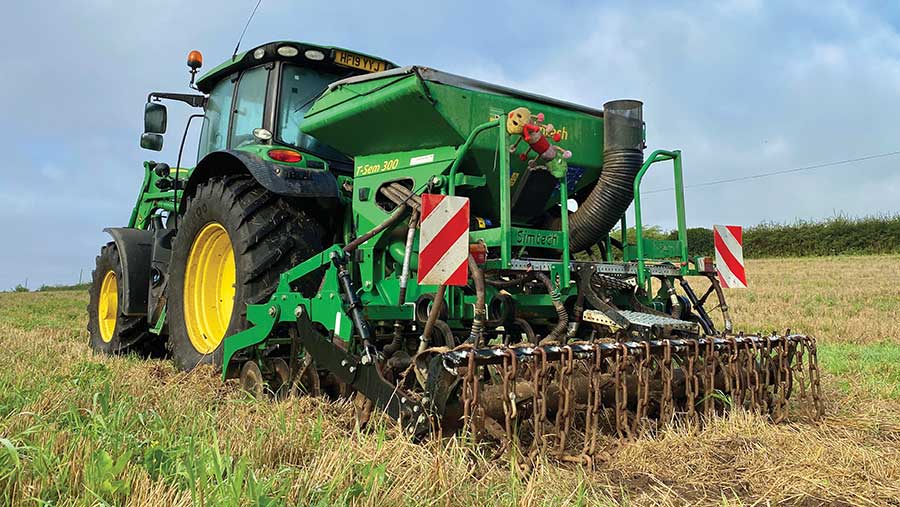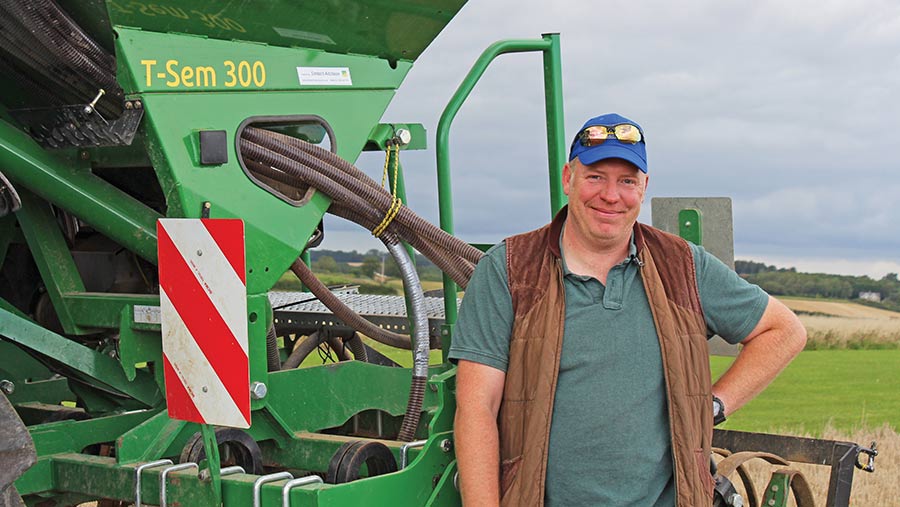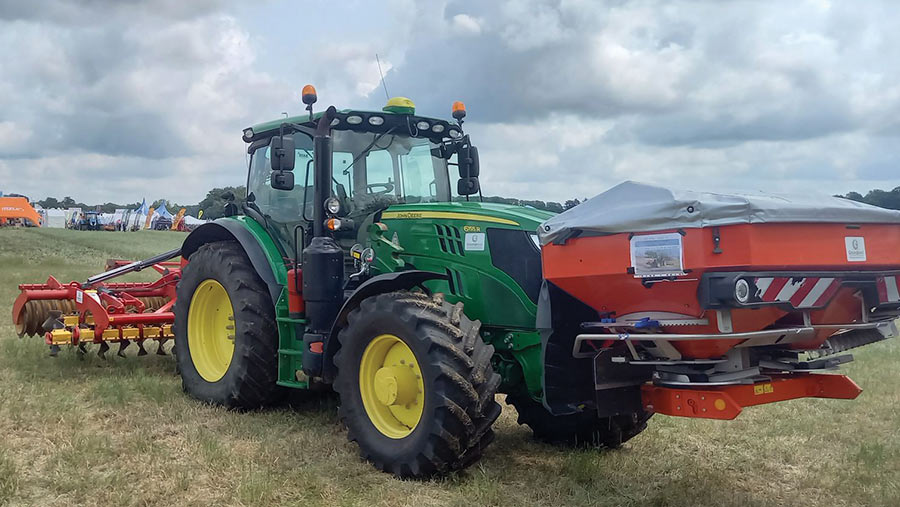Direct drills revisited: 3m Simtech T-Sem
 Simtech T Sem 3m drill © MAG/Oliver Mark
Simtech T Sem 3m drill © MAG/Oliver Mark When John Hawkins abandoned his intensive arable rotation for a low-input farming system, a 3m Simtech T-Sem Pneumatic was his new drill of choice.
His aim was to use it to establish everything from spring cereals and fertility-building leys to wild bird food mixes and canary grass on his 239ha of marginal land.
See also: Driver’s view: John Hawkins’ Simtech T-Sem drill
Moving from a 6m Vaderstad Rapid to the 3m Simtech meant the drill would have its work cut out.
“From the moment it arrived in 2017, I pushed it hard, driving it considerably faster than the suggested 8kph max working speed – it’s not had an easy life,” says John.
Initial problems of seed tube ends snapping due to the flexing of the coulters was remedied by fitting flexible boots off a John Deere 750A which, after more than five years of work, are still doing the job.
Where the drill has been used to plant crops in good conditions, they’ve established well and gone on to give respectable yields.
His spring barley tends to return 5 or 6t/ha, which isn’t bad considering there are virtually no artificial inputs.

John Hawkins © MAG/Oliver Mark
Simtech T-Sem pneumatic (2017)
- Width/coulter spacing 3m/188mm
- Coulters Inverted T-shaped tines
- Hopper 1,000 litres
- Price paid £29,500
Sticking soil
But like many no-till drills, it has its limitations when conditions become challenging.
One of these was damp soil sticking to the rear ring press which, in addition to its seed-bed consolidation role, controls working depth.
The build-up would result in very uneven seed placement, so John welded on a series of pointed scrapers, which solved the problem.
When soils are tacky, he’s had instances where the slot has been difficult to close and allowed slugs to have a field day.
He’s improved the situation by cutting the original looped chains that dragged soil into the slot into straight lengths.
The modified chains put mainly clean soil into the slot, rather than dragging in trash.
That said, a pass with the Cambridge rolls is still occasionally required to properly finish the job.
Because the slender T-shaped leg and leading disc create such little disturbance there can also be a lack of loose soil for the seed to establish in when the ground is wet or lacks organic matter.
“It’s a proper no-till drill, so you have to remember that you don’t get the tilth that a lot of tine drills create.”
The fact that the coulters are mounted on the end of pigtail tines, which vibrate back and forth, also means there can be some bunching of the seed up the rows.
“I don’t think it’s affected yield, but you don’t get a neat, evenly spaced row of seed.”
Hard-wearing coulters
As the coulters are tipped with tungsten carbide, they last particularly well, even in the farm’s abrasive sandy clay loam soils.
Changing the points can be a fiddle, so he’s built a ramp in the yard that the tractor can be backed-up so the drill is suspended in the air.
New system

A front-mounted Kuhn fertiliser spreader broadcasts seed across 12m bouts © MAG/Oliver Mark
Despite the drill’s overall success, John has recently adopted a faster and cheaper establishment method for the bulk of his cropping area.
This consists of a Kuhn front-mounted fertiliser spreader to broadcast the seed at 12m with a double overwrap, followed by a 4m set of Vaderstad Crosscutter discs to harrow them in.
As he works off GPS, the rig moves across the field in 12m bouts, and he drives back over at 4m with the spinner turned off to harrow over the missed bits.
Cleverly, he’s adapted the conventional rear-mounted spreader to run on the front linkage by installing a £500 Unimog pto gearbox which reverses the drive from the tractor.
With this outfit he can work at speeds of 15kph, covering 6-7ha in an hour.
The best yields have been comparable to the Simtech established crops, but it is a higher-risk approach that doesn’t always work perfectly.
Likes and gripes
Likes
- Good value
- Minimal soil disturbance
- Points last well
- Simple to use
Gripes
- Seed can bunch in row
- Has limitations in wet soil
- Soil can stick to press wheel
- Doesn’t always close slot

